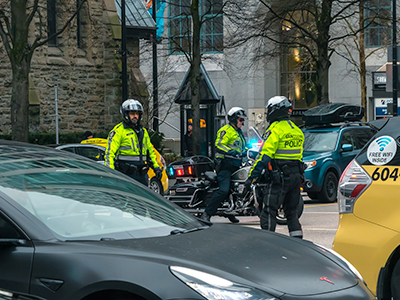
Medication adherence was found to have significant protective effects against motor vehicle collisions.
The car crash risk among people with schizophrenia is substantially lower when antipsychotic medications are taken as prescribed, according to the findings of a novel study led by Vancouver Coastal Health Research Institute researchers Drs. John Staples and Jeff Brubacher. Their published research suggests that antipsychotic adherence could be explored as a requirement for maintaining an active driver licence for individuals with schizophrenia, though they caution that more research is needed.
“For decades, there have been concerns about driving safety among people with schizophrenia,” Staples says. “But it is also important to remember that taking away someone’s driver licence can lead to social isolation and job loss.”
“We need to be careful not to be alarmist about a population that is already too often marginalized by society.”
Approximately 1 in 100 Canadians are living with a diagnosis of schizophrenia, which is caused by a person’s genes and sometimes environmental factors. Defined as a psychotic disorder, schizophrenia can dramatically alter a person’s perception and behaviour, including producing hallucinations, delusions and impaired cognition. The chronic condition is also among the top 10 causes of disability and increases the risk of mortality by almost three times.

“Drivers with untreated schizophrenia can have problems with understanding and responding to events on the road,” says Staples. “This can make it challenging to safely operate a motor vehicle. Prior research suggests that crash risks among drivers with schizophrenia are up to two times higher than crash risks for the average driver.”
Schizophrenia is managed primarily with antipsychotic medication, although other medications and treatments may also be prescribed. “People who adhere to their prescribed antipsychotics tend to function better and have better quality of life than people who are less diligent about taking their medication,” says Staples.
Prior to Staples and Brubacher’s study, it was known that antipsychotic medications improved performance on driving simulators for people with schizophrenia. However, their research is the first to demonstrate a link between better medication adherence and a dramatic reduction in real-world motor vehicle crashes.
Keeping everyone safer on the road

For each driver, they examined the 30 days prior to their crash and calculated the proportion of pre-crash days covered by antipsychotic prescriptions. For the same driver, they then examined a 30-day control interval ending a year prior to their crash, calculating the proportion of control days covered by antipsychotic prescriptions. Following this, they compared the prescription coverage in the pre-crash and control intervals.
“We found that, when people with schizophrenia are taking their antipsychotics as prescribed, they are 50 per cent less likely to be involved in a motor vehicle crash than they would be if they were not taking any antipsychotics at all,” says Staples.
“We think this shows that antipsychotic medication can be a protective intervention that makes people with schizophrenia safer drivers.”
Under Part 3, Section 14.6.1 of the CCMTA Medical Standards with B.C. Specific Guidelines, drivers with a psychiatric disorder are eligible for a licence if their condition is stable, they are able to drive and they have sufficient insight to stop driving if their condition becomes acute, such as during a psychotic episode. Physician approval, a medical exam or other assessments may also be needed to support an individual’s driving privileges.
“Among the individual records we reviewed for our study, we found that 63 per cent of individuals had near optimal antipsychotic medication adherence in the 30 days prior to their crash, while 20 per cent were not filling their antipsychotic medication prescriptions at all,” says Staples.
“Injuries are unacceptably common among people with schizophrenia,” Staples adds. “More work needs to be done to further reduce crash risk in order to protect people with schizophrenia as well as the general public.”


